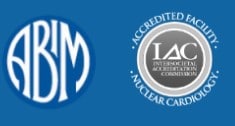Peripheral vascular disease is the hardening of arteries throughout your body (except you heart). This cardiovascular disease affects older members of the population and tends to worsen with age. PVD or Peripheral vascular disease is known especially for taking a toll on the arteries in the neck (carotid arteries), arteries in the abdomen, and the aorta and arteries that bring blood to the legs. When one of these arteries is obstructed, the results are unique for each area but can serious problems.
Symptoms of PVD
The most common location of Peripheral Vascular Disease is in the legs. While symptoms can vary for each person and location of the disease, here are some common symptoms. If you experience any of these regularly, contact your cardiologist.
- Pain that occurs while you are moving but stops when you are still.
- The pain comes and goes away also known as intermittent claudication
- The pain is dull and cramping rather than sharp. It may also feel like muscle fatigue.
Other symptoms of the peripheral vascular disease include the following:
- Buttock pain
- Numbness, tingling, or weakness in the legs
- Burning or aching pain in the feet or toes while resting
- A sore on a leg or a foot that will not heal
- One or both legs or feet feel cold or change color (pale, bluish, dark reddish)
- Loss of hair on the legs
- Impotence
How To Diagnose and Treat Peripheral Vascular Disease
Screening for PVD includes a physical exam and a measure of blood pressure in your limbs. Some more sophisticated tests include a peripheral pulsed volume recording which records waveforms in the limbs. Or an ultrasound may be performed.
Treatment is essential to preventing the rapid deterioration of the arteries. Cardiologists and vein specialists use a combination of medication, lifestyle changes, and physical therapy. It is important for patients with PVD to avoid smoking or nicotine consumption.
Overview of PVD
Peripheral vascular disease (PVD) is a nearly pandemic condition that has the potential to cause loss of limb or even loss of life. PVD manifests as insufficient tissue perfusion initiated by existing atherosclerosis acutely compounded by either emboli or thrombi. Many people live daily with significant degrees of peripheral vascular disease; however, in settings such as acute limb ischemia, this latent disease can suddenly become life-threatening and require emergency intervention to minimize morbidity and mortality.
If you think you may have PVD please reach out to your cardiologist immediately. To make an appointment visit https://centralgaheart.com/make-an-appointment/





